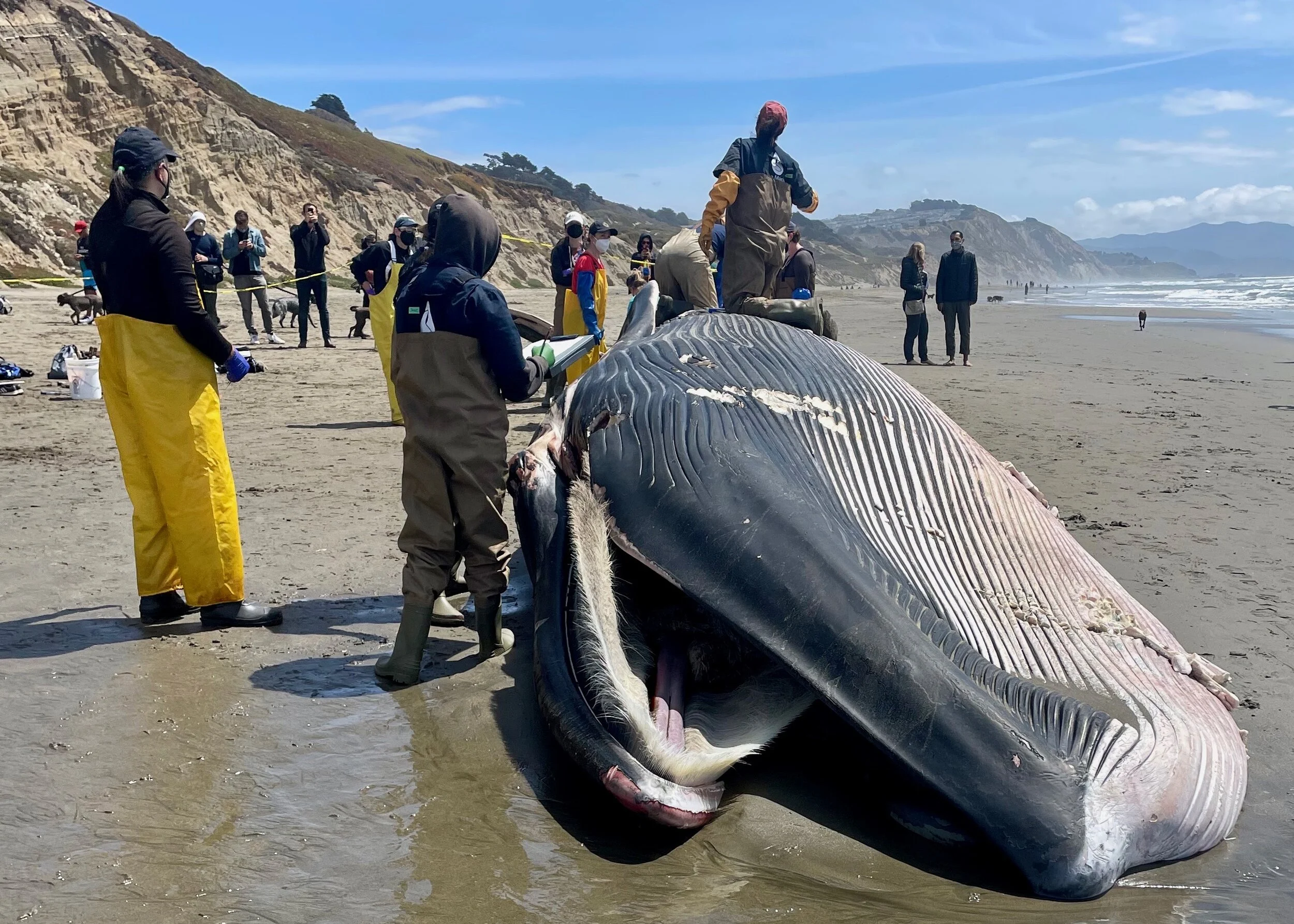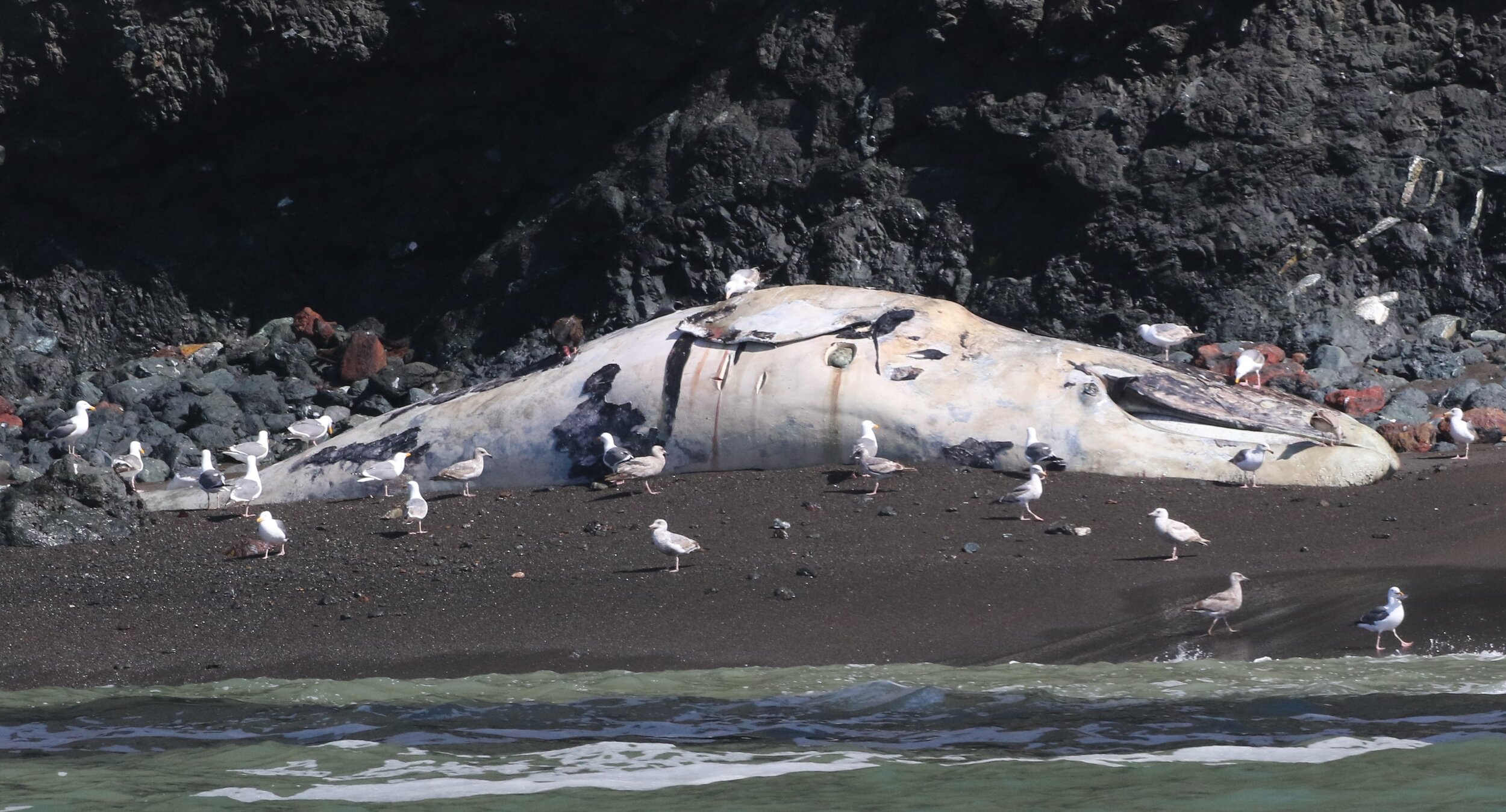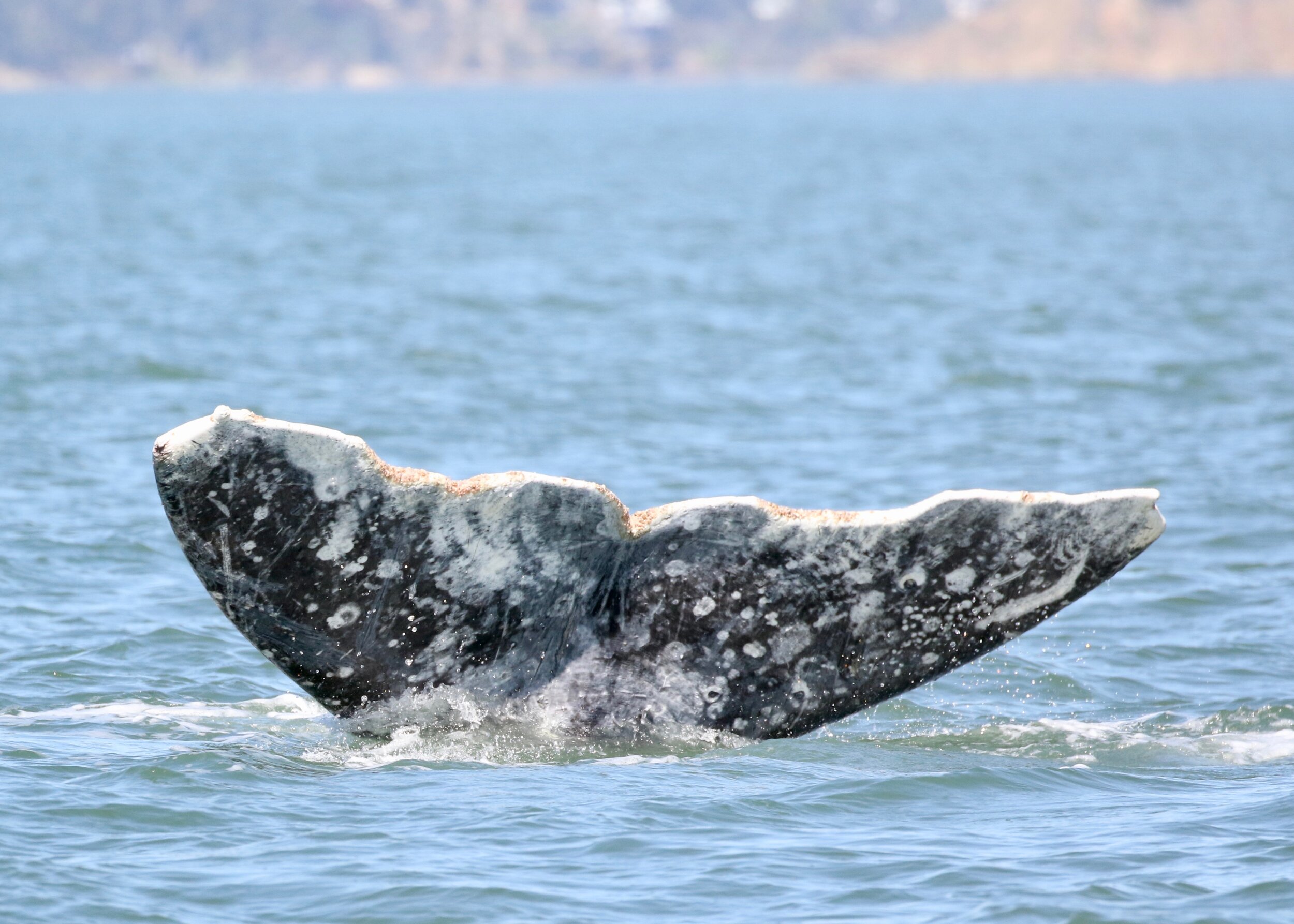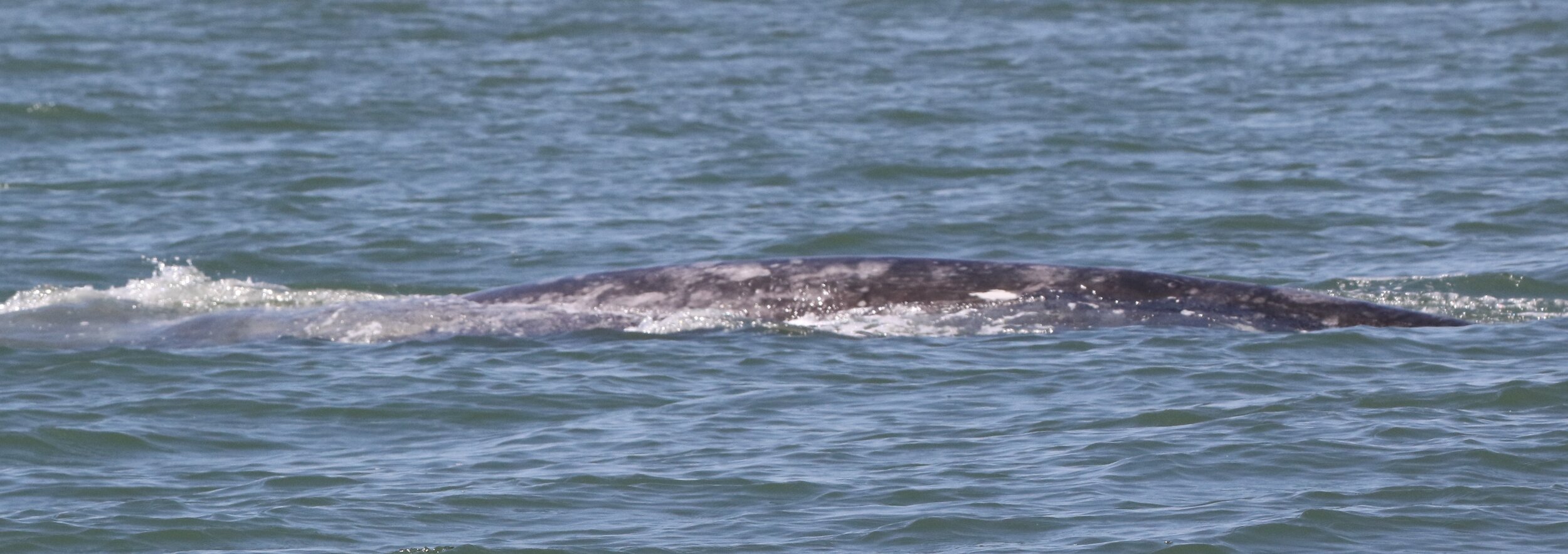Stranded fin whale at Fort Funston, California, photo by Izzy Szczepaniak
“In Conversation with Izzy” is a regular series where we hear from ACS Board Member and Cetacean Biologist Izzy Szczepaniak. In this installment, Board Member Susan Hopp met with Izzy to learn about recent strandings of fin and gray whales in the Bay Area.
Susan: Izzy, numerous whales have been in the news lately, but not for good reasons. What is going on with so many dead whales showing up on our Bay Area beaches?
Izzy: Yes, we’ve had six whales strand in the last six weeks – five gray whales and one fin whale. There is a combination of factors.
Stranded fin whale at Fort Funston, photo by Izzy Szczepaniak
Susan: Let’s start with the fin whale. That was such a beautiful creature to show up at Fort Funston. While it was a terrible reason, it was an opportunity to get up close to such a magnificent cetacean. What a marvel for the public to observe and take in the magic of a giant of our seas. I was part of the respectful and curious crowd that gathered around you and the other scientists as you investigated hands-on. What were you doing, and were there any results that you can share?
Izzy: The fin whale stranded on April 24th at Fort Funston. The whale was examined, and during the necropsy, it was determined the whale was struck in the head with a great force based on damage to the head tissue. The cause of death was determined to have been a ship strike.
Susan: Can you say more about what happens in a necropsy?
Izzy: When conducting a necropsy, we take measurements of the whale. This includes total length, the fluke (two lobes of the tail), the flippers, and the dorsal fin. We take tissue samples and when possible stomach contents. We take photographs of any marks on the body – scars, unusual color patterns, bites, and parasites. We attempt to identify the sex of the animal and if possible, the reproductive status. In this case, we did identify it was a male by the penis.
Fin whale necropsy at Fort Funston, photo by Izzy Szczepaniak
Susan: And now tell us about the five gray whales.
Izzy: Of the five gray whales, three were stranded inside San Francisco Bay, one in Moss Beach, and one on Muir Beach. Ship strikes were the cause of death of two of the gray whales. The other three were emaciated. One of those three stranded in Tiburon, and as it turned out I photographed that animal feeding in the bay between Alcatraz and Angel Island in late March. As the whale dove, we could tell it was feeding because we witnessed a trail of mud plumes caused by the disturbance of the bay floor sediments. Gray whales feed on the animals that live in, on, and just above the seafloor.
Susan: What is behind the lack of food leading to emaciation?
Izzy: That is a big topic and it relates to many factors leading to gray whales not finding enough food to sustain their life cycle. I refer you to Dr. Jim Sumich’s April talk on gray whales found here. He discusses the many factors that include climate change's impact on the ocean food chain and population numbers.
Susan: Izzy, this is quite a report – thank you. Is there anything you’d like to close with?
Izzy: Yes, I’d like to provide a couple of reminders. First, if you see a stranded marine mammal anywhere in the Bay Area, please report it immediately to The Marine Mammal Center at (415) 289-SEAL or (415) 289-7325. Second, I’d like to remind the community that it is illegal for anyone without a permit to take any part of a dead marine mammal stranded on the beach. The penalty for possession of any part of a marine mammal can result in a fine of $10,000 and up to a year in jail.
*All marine mammal stranding activities were conducted under authorization by the National Marine Fisheries Service through a Stranding Agreement issued to the California Academy of Sciences and MMPA/ESA Permit No. 18786-04.
Izzy Szczepaniak is a Marine Biologist, an American Cetacean Society, San Francisco Bay Chapter Board member, and a Research Associate of The Marine Mammal Center and California Academy of Sciences. Look for more “In Conversation with Izzy” posts in the coming months as we follow up with Izzy so that we may bring you his insights into the world of whales, dolphins, and porpoises in the San Francisco Bay Area.
Susan Hopp is a strategist, educator, and practitioner of sustainable and regenerative management. She works with organizations to identify, formalize and execute sustainability strategies. Susan is a member of the Board of Directors of the American Cetacean Society, San Francisco Bay Chapter, and an adjunct faculty member at the University of San Francisco where she teaches Sustainability Leadership in the Environmental Management Masters program.
